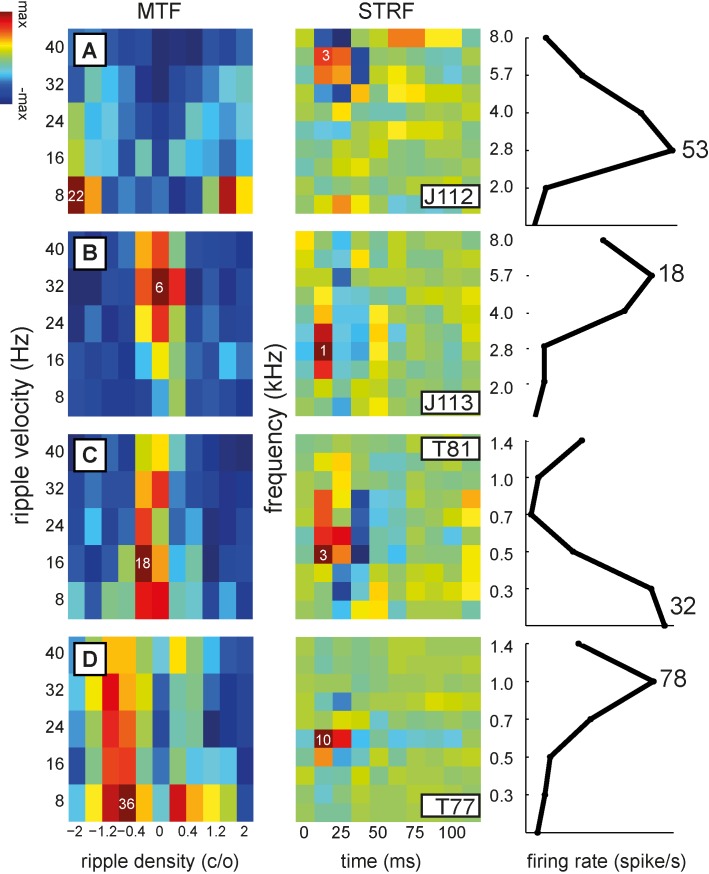Figure 4. Magnitude transfer functions, corresponding STRFs, and tone responses of the cells shown in Fig. 2.
A. J112, example of low best ripple velocity (ω B = 8 Hz), and high best ripple density (ΩB = −2 c/o); furthermore it prefers only moving ripples. Note the large difference (1.25 octaves) between BFtone and BFstrf. B. J113, example of high best ripple velocity (ω B = 32 Hz) and low best ripple density (ΩB = 0 c/o). It is responsive to both moving ripples and AM complexes. The difference between BFtone and BFstrf is one octave. C. T81, example of asymmetric transfer function with preference for upward direction (Ω<0) with ΩB = −0.4 c/o and ω B = 32 Hz. The difference between BFtone and BFstrf is 0.5 octaves. D. T77, another example of preference for low velocity moving ripples (ω B = 8 Hz; ΩB = −0.8 c/o).

